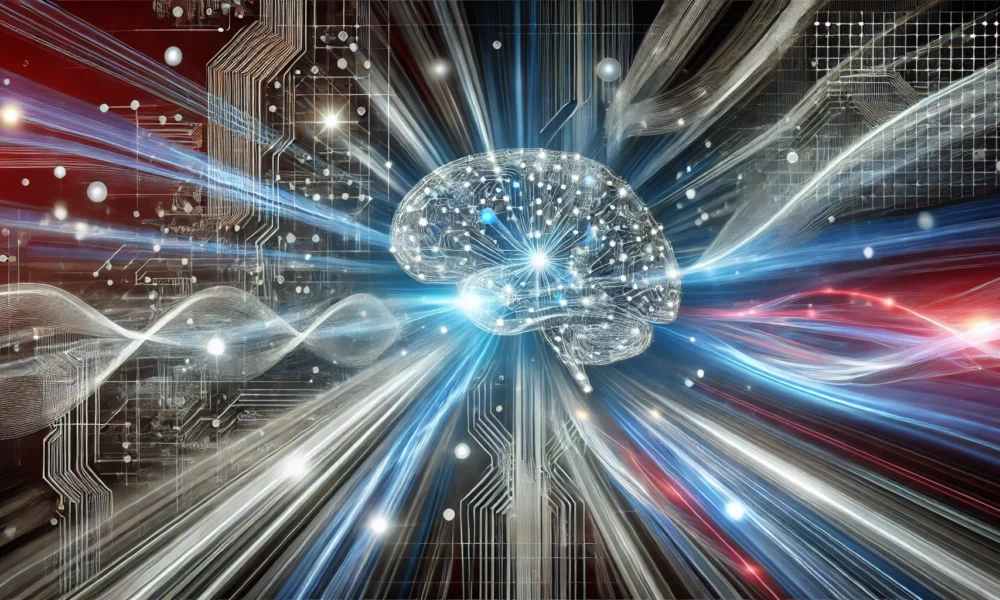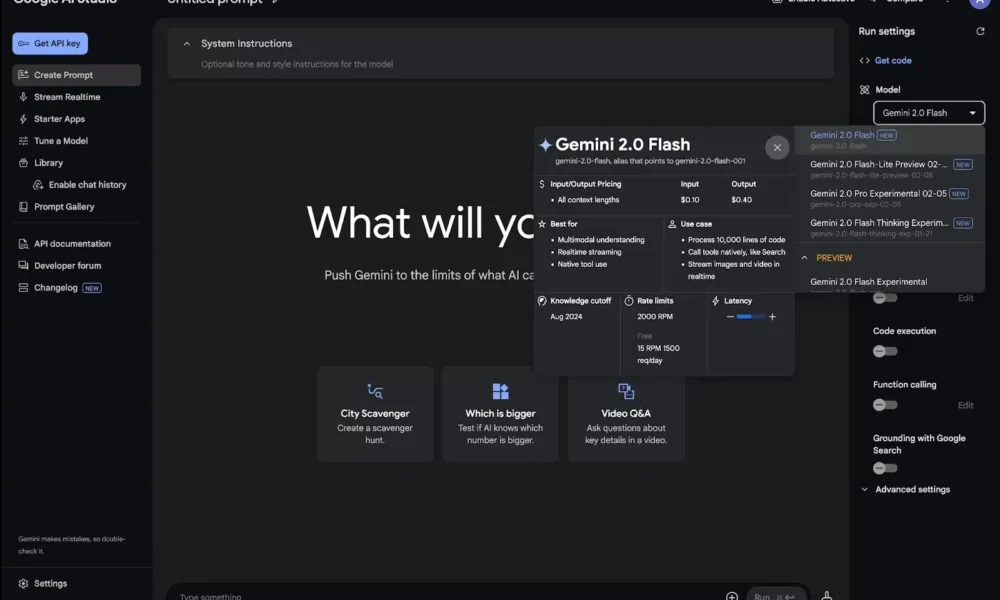Reimagining AI Architectures to Maximize Efficiency
In 2017, a significant change reshaped Artificial Intelligence (AI). A paper titled Attention Is All You Need introduced transformers. Initially developed to enhance language translation, these models have evolved into a robust framework that excels in sequence modeling, enabling unprecedented efficiency and versatility across various applications. Today, transformers are not just a tool for natural language processing; they are the reason for many advancements in fields as diverse as biology, healthcare, robotics, and finance.
What began as a method for improving how machines understand and generate human language has now become a catalyst for solving complex problems that have persisted for decades. The adaptability of transformers is remarkable; their self-attention architecture allows them to process and learn from data in ways that traditional models cannot. This capability has led to innovations that have entirely transformed the AI domain.
Initially, transformers excelled in language tasks such as translation, summarization, and question-answering. Models like BERT and GPT took language understanding to new depths by grasping the context of words more effectively. ChatGPT, for instance, revolutionized conversational AI, transforming customer service and content creation.
As these models advanced, they tackled more complex challenges, including multi-turn conversations and understanding less commonly used languages. The development of models like GPT-4, which integrates both text and image processing, shows the growing capabilities of transformers. This evolution has broadened their application and enabled them to perform specialized tasks and innovations across various industries.
With industries increasingly adopting transformer models, these models are now being used for more specific purposes. This trend improves efficiency and addresses issues like bias and fairness while emphasizing the sustainable use of these technologies. The future of AI with transformers is about refining their abilities and applying them responsibly.
Transformers in Diverse Applications Beyond NLP
The adaptability of transformers has extended their use well beyond natural language processing. Vision Transformers (ViTs) have significantly advanced computer vision by using attention mechanisms instead of the traditional convolutional layers. This change has allowed ViTs to outperform Convolutional Neural Networks (CNNs) in image classification and object detection tasks. They are now applied in areas like autonomous vehicles, facial recognition systems, and augmented reality.
Transformers have also found critical applications in healthcare. They are improving diagnostic imaging by enhancing the detection of diseases in X-rays and MRIs. A significant achievement is AlphaFold, a transformer-based model developed by DeepMind, which solved the complex problem of predicting protein structures. This breakthrough has accelerated drug discovery and bioinformatics, aiding vaccine development and leading to personalized treatments, including cancer therapies.
In robotics, transformers are improving decision-making and motion planning. Tesla’s AI team uses transformer models in their self-driving systems to analyze complex driving situations in real-time. In finance, transformers help with fraud detection and market prediction by rapidly processing large datasets. Additionally, they are being used in autonomous drones for agriculture and logistics, demonstrating their effectiveness in dynamic and real-time scenarios. These examples highlight the role of transformers in advancing specialized tasks across various industries.
Why Transformers Excel in Specialized Tasks
Transformers’ core strengths make them suitable for diverse applications. Scalability enables them to handle massive datasets, making them ideal for tasks that require extensive computation. Their parallelism, enabled by the self-attention mechanism, ensures faster processing than sequential models like Recurrent Neural Networks (RNNs). For instance, transformers’ ability to process data in parallel has been critical in time-sensitive applications like real-time video analysis, where processing speed directly impacts outcomes, such as in surveillance or emergency response systems.
Transfer learning further enhances their versatility. Pretrained models such as GPT-3 or ViT can be fine-tuned for domain-specific needs, significantly reducing the resources required for training. This adaptability allows developers to reuse existing models for new applications, saving time and computational resources. For example, Hugging Face’s transformers library provides plenty of pre-trained models that researchers have adapted for niche fields like legal document summarization and agricultural crop analysis.
Their architecture’s adaptability also enables transitions between modalities, from text to images, sequences, and even genomic data. Genome sequencing and analysis, powered by transformer architectures, have enhanced precision in identifying genetic mutations linked to hereditary diseases, underlining their utility in healthcare.
Rethinking AI Architectures for the Future
As transformers extend their reach, the AI community reimagines architectural design to maximize efficiency and specialization. Emerging models like Linformer and Big Bird address computational bottlenecks by optimizing memory usage. These advancements ensure that transformers remain scalable and accessible as their applications grow. Linformer, for example, reduces the quadratic complexity of standard transformers, making it feasible to process longer sequences at a fraction of the cost.
Hybrid approaches are also gaining popularity, combining transformers with symbolic AI or other architectures. These models excel in tasks requiring both deep learning and structured reasoning. For instance, hybrid systems are used in legal document analysis, where transformers extract context while symbolic systems ensure adherence to regulatory frameworks. This combination bridges the unstructured and structured data gap, enabling more holistic AI solutions.
Specialized transformers tailored for specific industries are also available. Healthcare-specific models like PathFormer could revolutionize predictive diagnostics by analyzing pathology slides with unprecedented accuracy. Similarly, climate-focused transformers enhance environmental modeling, predicting weather patterns or simulating climate change scenarios. Open-source frameworks like Hugging Face are pivotal in democratizing access to these technologies, enabling smaller organizations to leverage cutting-edge AI without prohibitive costs.
Challenges and Barriers to Expanding Transformers
While innovations like OpenAI’s sparse attention mechanisms have helped reduce the computational burden, making these models more accessible, the overall resource demands still pose a barrier to widespread adoption.
Data dependency is another hurdle. Transformers require vast, high-quality datasets, which are not always available in specialized domains. Addressing this scarcity often involves synthetic data generation or transfer learning, but these solutions are not always reliable. New approaches, such as data augmentation and federated learning, are emerging to help, but they come with challenges. In healthcare, for instance, generating synthetic datasets that accurately reflect real-world diversity while protecting patient privacy remains a challenging problem.
Another challenge is the ethical implications of transformers. These models can unintentionally amplify biases in the data they are trained on. This can lead to unfair and discriminatory outcomes in sensitive areas like hiring or law enforcement.
The integration of transformers with quantum computing could further enhance scalability and efficiency. Quantum transformers may enable breakthroughs in cryptography and drug synthesis, where computational demands are exceptionally high. For example, IBM’s work on combining quantum computing with AI already shows promise in solving optimization problems previously deemed intractable. As models become more accessible, cross-domain adaptability will likely become the norm, driving innovation in fields yet to explore the potential of AI.
The Bottom Line
Transformers have genuinely changed the game in AI, going far beyond their original role in language processing. Today, they are significantly impacting healthcare, robotics, and finance, solving problems that once seemed impossible. Their ability to handle complex tasks, process large amounts of data, and work in real-time is opening up new possibilities across industries. But with all this progress, challenges remain—like the need for quality data and the risk of bias.
As we move forward, we must continue improving these technologies while also considering their ethical and environmental impact. By embracing new approaches and combining them with emerging technologies, we can ensure that transformers help us build a future where AI benefits everyone.











